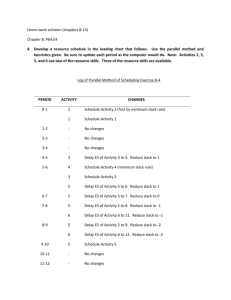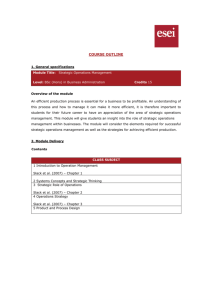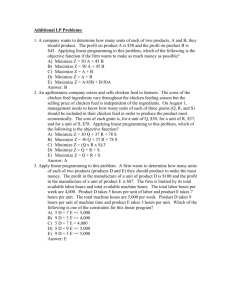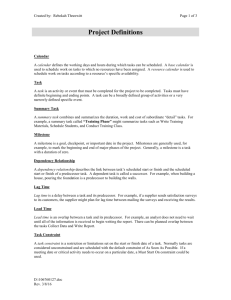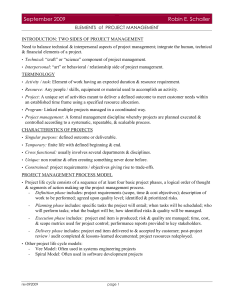Sensitivity Recap
advertisement
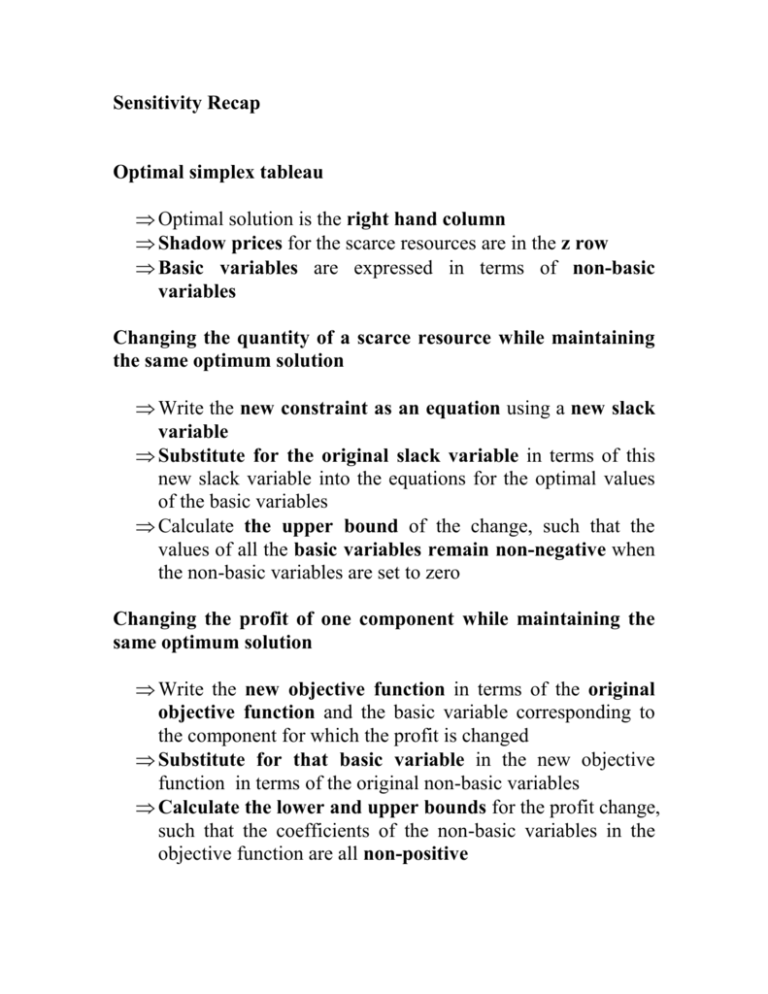
Sensitivity Recap Optimal simplex tableau Optimal solution is the right hand column Shadow prices for the scarce resources are in the z row Basic variables are expressed in terms of non-basic variables Changing the quantity of a scarce resource while maintaining the same optimum solution Write the new constraint as an equation using a new slack variable Substitute for the original slack variable in terms of this new slack variable into the equations for the optimal values of the basic variables Calculate the upper bound of the change, such that the values of all the basic variables remain non-negative when the non-basic variables are set to zero Changing the profit of one component while maintaining the same optimum solution Write the new objective function in terms of the original objective function and the basic variable corresponding to the component for which the profit is changed Substitute for that basic variable in the new objective function in terms of the original non-basic variables Calculate the lower and upper bounds for the profit change, such that the coefficients of the non-basic variables in the objective function are all non-positive Changing the profit on two components As above, using the ratio of the two changes in profit Adding an extra variable, finding the level of profit on the new variable above which original optimum solution no longer holds Express the new objective function in terms of the original objective function and the new basic variable Express the new slack variables in terms of the original slack variables and the new basic variable Hence express the new objective function in terms of the new slack variables and the new basic variable Find the maximum level of profit which ensures that the coefficient of the new basic variable in the new objective function is non-positive Finding a new optimum solution corresponding to a new variable is fixed when the profit Rewrite the original optimal equations in terms of the new slack variables and enter into tableau form Iterate the tableau once to obtain the optimal solution Adding an extra constraint Substitute the optimal solution values of the basic variables into the constraint expressed as an equation. If the new slack variable is non negative the new constraint is redundant. If the new slack variable is negative, write the new constraint in terms of the non-basic variables of the original optimum solution and the new slack variable and enter into tableau form. Calculate the absolute value of the ratio of each negative entry in the row corresponding to the new slack variable to the entry below it in the z row. The non-basic variable corresponding to the column with the smallest value of this ratio is the entering variable, the new slack variable is the departing variable. Iterate the tableau once to obtain the optimal solution


